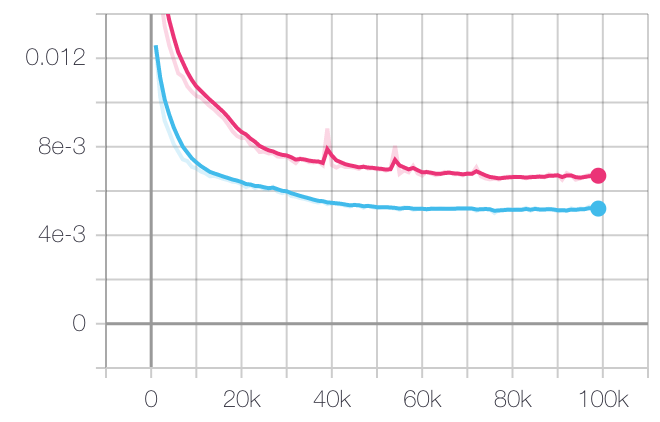A PyTorch implementation of Tacotron2, described in Natural TTS Synthesis By Conditioning Wavenet On Mel Spectrogram Predictions, an end-to-end text-to-speech(TTS) neural network architecture, which directly converts character text sequence to speech.
- https://github.com/kaituoxu/Tacotron2 is refereced with pytorch_sound
- Differences
- Use log mel spectrogram and Waveglow Vocoder to synthesize audios
- Change dimension of tensors from (N, T, C) to (N, C, T)
- N : batch size, C : channels, T : time steps
- Add stop status on inference time.
- Add thiner pre-net to get more accurate attention.
- And little bit different text encoder.
- Ubuntu 16.04
- Python 3.6
- PyTorch 1.2.0
- 2 GPUs
- Install above external repos
You should see first README.md of pytorch_sound, to prepare dataset.
$ pip install git+https://github.com/Appleholic/pytorch_sound
- Install package
$ pip install -e .- Train
$ python tacotron2_pytorch/train.py [YOUR_META_DIR] [SAVE_DIR] [SAVE_PREFIX] [[OTHER OPTIONS...]]- Synthesize (one sample)
- It writes audio, wave plot, attention and mel spectrogram image.
$ python tacotron2_pytorch/synthesize.py [TEXT] [PRETRAINED_PATH] [MODEL_NAME] [SAVE_DIRECTORY]- When inference time, spectrogram got several stripes. It might be occurred by hard drop out. (Not appear on training time)
- Stop token is not working well on inference time.
- Error case and resolve them: Torchhub waveglow
- Automatically downloaded checkpoint file is crashed with using hubconf.py on Nvidia DeepLearningExample
- Download directly from nvidia waveglow checkpoint 32fp code, and copy that into '$HOME/.cache/torch/checkpoints'
- Total Validation Loss
- Sum of 2 MSE Losses (linear, linear + post) and stop BCE Loss
- red : pre net 64 dim, blue : pre net 256 dim
- 100,000 steps
- Attention, Mel Spectrogram Sample

